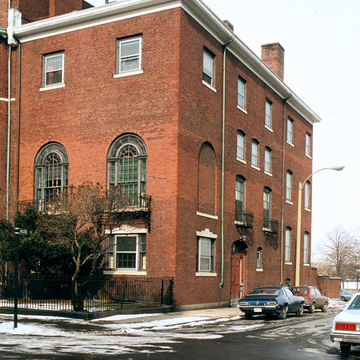A number of the city's leading architects speculated on lots for themselves and their clients along Bay State Road, endowing the neighborhood with a gently artistic flavor. Arthur Little, who in 1890 designed 2 Raleigh Street for himself, was an early Colonial Revival architect who spent his holidays sketching colonial houses and acquiring remnants from those being demolished. The local press hailed 2 Raleigh Street as “being constructed of material taken from a number of old Colonial houses . . . 200 years old, the whole forming a most unique and artistic combination” (Salzman, Buildings and Builders, p. 159). The entrance facade shows a prominent asymmetry and unexpected shifts of floor heights, which read as the reverse-image of the Little-designed town house opposite at 1 Raleigh Street.
City Architect Edmund March Wheelwright decided in 1893 to settle in this new district at 59–61 Bay State Road, next door to Arthur Little. With a double house, Wheelwright could give the impression of a grand single residence while deriving income from his twin unit. The red brick, symmetrical, bowfront facade is an excellent example of the revival of the Federal style with ornamentation reminiscent of Charles Bulfinch's Third Harrison Gray Otis house (BH13; 1805–1806) at 45 Beacon Street.


















